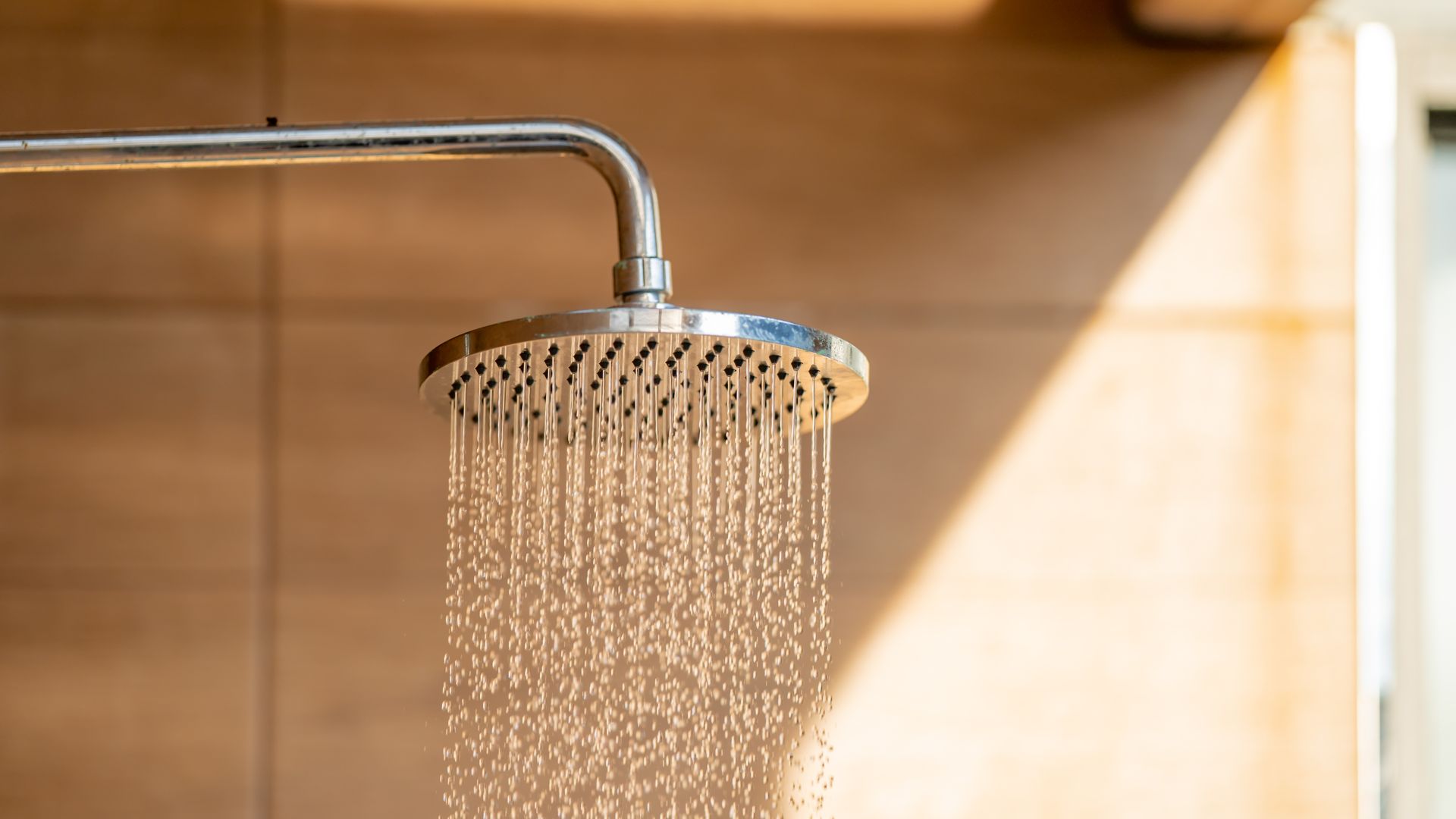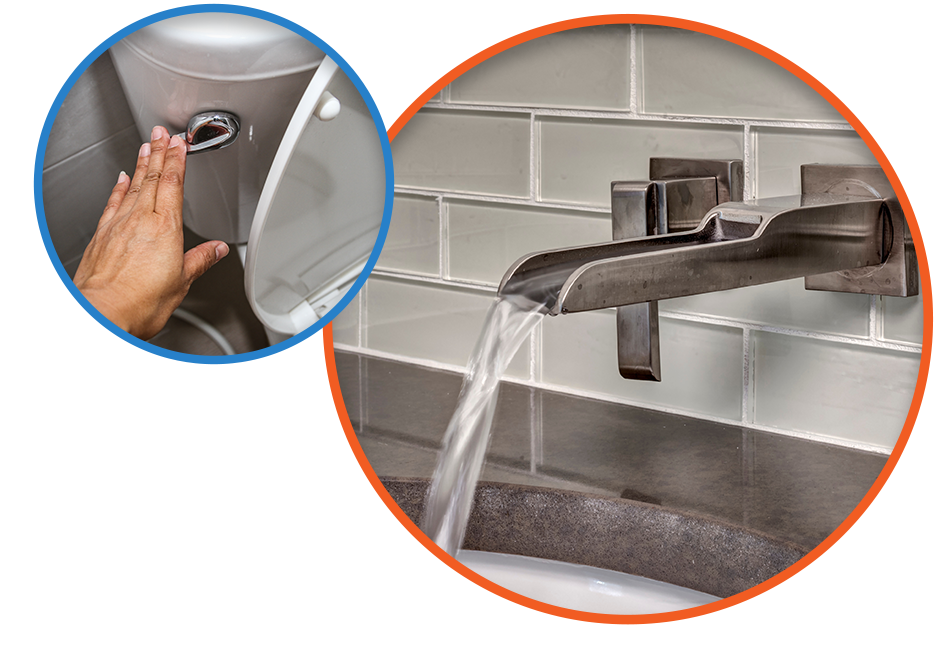
Backflow Plumber in Santa Barbara, CA
Specialized Backflow Plumbing for Water Safety
At Lewis Plumbing, we are committed to maintaining the safety and reliability of your water supply in Santa Barbara County. With over 70 years of service in the community, our family-run business combines experience, quality assurance, and cutting-edge practices to meet the unique challenges posed by our local environment. Our licensed plumbers are available 24/7 to provide top-tier backflow services, ensuring your plumbing is protected against water contamination risks.
Our dedication to Santa Barbara goes beyond just providing plumbing services. We understand the specific conditions and regulations of the area, such as the importance of addressing the city's vulnerability to seismic activity and the implications it might have on plumbing systems. This local expertise allows us to tailor solutions that are both effective and compliant with Santa Barbara's standards, providing peace of mind for every homeowner and business we serve.
Protect your drinking water with certified backflow plumbing services. Contact us at (805) 516-5590 or fill out our online form.
Understanding Backflow & Its Risks in Santa Barbara
Backflow occurs when the normal direction of water flow in your plumbing system reverses, potentially contaminating the drinking water supply with harmful substances. In Santa Barbara, the risk of backflow is heightened due to the unique coastal climate and the varied elevations throughout the region. Regular backflow inspections are crucial for properties in areas such as Goleta and Montecito, where such issues are more prevalent.
Given the intricate water supply network in Santa Barbara, maintaining a safe and contaminant-free water system is paramount. Each property may face different backflow risks depending on factors such as proximity to the coastline or elevation changes, which can affect water pressure. Our team also considers these geographical factors when diagnosing potential vulnerabilities and implementing customized solutions to prevent backflow incidents.


Trust the Team That’s There When You Need Us
For over 70 years, we'veproudly served Santa Barbara with a commitment to quality, care, and innovation. From small repairs to major installations, we’re the local team you can always count on.
-
Licensed & InsuredWe make it easy for you to have confidence in the team you call.
-
Contact Us for a Free ProposalWe make it easy to get started with a completely free proposal.
-
We Offer Emergency ServicesDon't sit around and wait for a plumber. We're here for you!
-
Ask About Our WarrantyWe back all of our services with a warranty for your peace of mind.
Plumbing problems shouldn’t disrupt your comfort or peace of mind. From quick fixes to major projects, Lewis Plumbing is here to lend a helping hand. As your local, family-run plumbing company since 1948, we take pride in treating every customer like one of our own. Give us a call today and experience the dependable, caring service that’s been keeping Santa Barbara flowing smoothly for decades.

Signs You May Have Backflow in Your Santa Barbara Home
Backflow is a serious plumbing issue where contaminated water flows backward into your clean drinking water supply, posing significant health risks. It's often invisible, but there are crucial warning signs that Santa Barbara homeowners should be aware of. Recognizing these indicators promptly can help protect your household from consuming or using unsafe water, which is paramount for health and safety.
- Discolored or Cloudy Water: One of the most common signs is water coming out of your taps that is yellow, brown, or otherwise cloudy. This indicates that dirty water, potentially from your irrigation system, sewer, or another non-potable source, has mixed with your potable supply.
- Foul Odors or Tastes in Water: If your drinking water suddenly develops an unusual or unpleasant odor, resembling sewage, rotten eggs, or chemicals, or has a strange taste, it's a strong indication of contamination due to backflow.
- Slow Draining Fixtures (Unrelated to Clogs): While not always a direct sign, a persistent issue with slow-draining sinks or toilets, especially if combined with other symptoms, can sometimes suggest pressure imbalances that could lead to backflow.
- Visible Sediment or Debris in Water: If you notice small particles, rust flakes, or other debris in your otherwise clear tap water, it could be a sign that water is being pulled from a compromised source or a line that has accumulated contaminants.
- Unusual Water Pressure Fluctuations: While varying water pressure can have many causes, sudden and unexplained drops or surges in water pressure, particularly at specific times, could indicate a cross-connection issue or a problem with your backflow prevention device.
- Water Coming from an Unconnected Hose or Faucet: If you see water unexpectedly flowing from a garden hose that is not connected to a spigot, or from an outdoor faucet that is turned off, it might indicate that back-siphonage is occurring, pulling water from an external source back into your system.
If you observe any of these signs in your Santa Barbara home, do not use the affected water for drinking, cooking, or bathing. It's critical to contact a certified backflow plumber immediately. Prompt professional intervention is essential to diagnose the problem, restore water safety, and ensure compliance with Santa Barbara regulations. Don't hesitate to call the expert backflow plumber Santa Barbara residents trust.
Need a backflow test or repair? Get expert, compliant service today. Contact us at (805) 516-5590 or fill out our online form.
Frequently Asked Questions
What Are the Health Risks Associated with Backflow Contamination?
Backflow contamination poses significant health risks because it introduces unsafe substances into the clean drinking water supply, making it hazardous for consumption and use. The specific dangers depend on the source of the contamination, which could range from harmless but unpleasant aesthetic issues like dirty water from an irrigation system entering your tap, to severe health threats. Contaminants can include pesticides, fertilizers, human waste from sewer lines, chemicals from industrial processes, or even bacteria and viruses. Ingesting or coming into contact with these can lead to a wide array of illnesses, including gastrointestinal issues, infections, poisoning, or, in severe cases, life-threatening conditions, making backflow a serious public health concern that requires immediate attention.
What Causes Backflow to Occur?
Backflow occurs when there is a sudden change in water pressure within the plumbing system, causing the normal flow of water to reverse direction. There are two primary mechanisms that cause this reversal: back-siphonage and backpressure. Back-siphonage happens when there's a drop in the supply main's pressure (e.g., due to a water main break, heavy water demand, or firefighting activity), creating a vacuum that sucks non-potable water from a property's plumbing system back into the main supply. Backpressure, on the other hand, occurs when the pressure in a private system (e.g., from a booster pump, a boiler, or an elevated tank) becomes higher than the pressure in the public water supply, forcing contaminated water from the private system into the public lines. Both scenarios create cross-connections that allow unsafe water to mix with potable water.
How Long Does a Typical Backflow Test or Repair Take?
A typical backflow prevention device test is a relatively quick process, usually taking a certified plumber about 15 to 30 minutes per device. This involves connecting specialized gauges to the device and performing a series of readings to ensure it is functioning correctly and preventing backflow as designed. If the test reveals that the device is failing or requires adjustment, the repair time will vary. Simple repairs like replacing a worn rubber seal or spring might add another 30 minutes to an hour. However, if the device needs more extensive internal repairs, a complete rebuild, or a full replacement, the process could take several hours, depending on the complexity of the specific device and the extent of the work required.
Can I Perform Backflow Testing or Repair Myself?
No, you cannot perform backflow testing or repair yourself. Backflow prevention is a highly specialized area of plumbing that requires specific certification and expertise. Testing backflow prevention devices involves using calibrated equipment and following precise procedures to ensure the device is functioning correctly and preventing contamination of the public water supply. Repairing these devices also requires detailed knowledge of their intricate internal components. In most jurisdictions, including Santa Barbara, only certified backflow prevention assembly testers are legally allowed to perform these services due to the critical public health implications of a malfunctioning device. Attempting DIY backflow work could lead to improper installation or repair, posing severe health risks and potentially incurring significant fines.
How Often Should Backflow Inspections Be Conducted?
Backflow inspections, specifically the testing of backflow prevention devices, should be conducted annually as a mandatory requirement in most municipalities, including Santa Barbara. This yearly testing is crucial to ensure that these critical devices are functioning correctly and effectively, preventing contaminated water from flowing back into the potable water supply. Over time, parts within backflow prevention assemblies can wear out, seals can degrade, and internal components can fail due to water pressure fluctuations, mineral buildup, or corrosion. Regular annual inspections by a certified backflow plumber verify the device's integrity and compliance with local water authority regulations, safeguarding public health and maintaining the quality of your drinking water.
What Happens During a Backflow Inspection?
During a backflow inspection, a certified backflow plumber will perform a series of tests on your backflow prevention assembly to ensure it is operating correctly. The process typically involves shutting off the water supply to the device temporarily and connecting specialized test gauges to various ports on the assembly. The plumber will then manipulate valves and observe gauge readings to verify that each check valve and relief valve within the device is holding pressure and opening/closing within specified parameters. This precise testing determines if the device is preventing both back-siphonage and backpressure. Upon completion, the plumber will provide a detailed report of the findings, indicating whether the device passed or failed, and submit the necessary documentation to the local water authority, such as Santa Barbara's water department.
